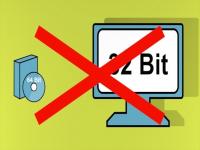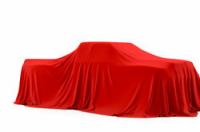What is a score
Have you ever heard a real orchestra play? No matter whether it is yes or no, you can imagine how many instruments the conductor has to coordinate here. In order not to lose track of things, there is the score. Anyone who does not want to continue to be regarded as a "cultural bastard" and wants to learn the basic concepts of classical music will find a brief overview of what a score is here.
What a score is
A score is a written record of a complex piece of music that in the vast majority of cases contains several instruments. The term comes from the Italian term "partitura", which means division. A score can be several different Functions fulfill.
- It primarily serves as an overview for the conductor of an orchestra during the concert.
- On the other hand, it helps the individual line-ups of the orchestra to find their way around the piece. You always have to keep in mind that the recording of scores comes from a time when there were no CDs or records that the musicians could listen to for orientation.
- This leads to the next use of the score. In the past, it was primarily used to hold a piece so that it would later be in precisely this one Form can be reproduced by an orchestra other than the one for which it was composed could.
- In addition, very interested orchestra visitors sometimes watch the musicians play on the score.
- Sometimes the score is also used for the concert versions of individual instruments. A piano score, for example, contains only two lines in which the notes for the left and right hands are written down.
In order to better distinguish between classical compositions, one subdivides ...
Structure of a score
The sight of a score can seem a bit confusing at first glance, if not so daunting that it is immediately put away again. This is because every detail of the orchestral piece is really recorded in a score. This includes all instruments. The game speed and effects are also noted.
- At first glance, the recording may seem like a large, confusing mess, but the exact opposite is the case. In a score there are fixed rules about what has to be in which position, for example the instruments are in a fixed order.
- The instruments are initially lined up according to their type. The list is from top to bottom. First the woodwinds stand, then brass, percussion instruments and strings follow.
- The woodwind instruments are listed from top to bottom in the following order: flutes, oboes, clarinets, bassoons. The order of the brass instruments is: horns, trumpets, trombones, tubas.
- The percussion instruments are initially further subdivided into those with a specific tom height and those with an indefinite tom height. First there are those with a certain pitch: timpani, celesta, glockenspiel, xylophone. Then the percussion instruments stand with an indefinite pitch: drums, cymbals, triangles, etc.
- The strings are listed last in this order: violin, viola, cello, double bass.
- Special, non-categorizable instruments, solo singers and choral chants are listed in this order after the percussion instruments. Church scores can sometimes have a different order.
Getting started with reading a score
Even if a score seems very confusing at first glance, the whole thing is structured very systematically so that it is possible to understand the score step by step.
- People who want to learn to read a score so that they can understand it, especially during the piece should start by first choosing a particularly well audible and distinctive instrument follow. Often z. B. the 1. Violin.
- This should be practiced until the instrument can be found on the score at any time in the current piece. Then you can try to follow another instrument that is running in the background. If this succeeds at any time, then you have almost cracked the score reading.
- A musician who works with scores should actually be able to find each of the instruments on the score at any point in time. But until then it is a lot of work and permanent training of the hearing is necessary. One Help for reading scores is available on the Internet, but it is no substitute for permanent, professional training.
- Due to this difficulty in reading, modern scores now often do without the classical spelling and in some cases they are very different from composer to composer. This has the advantage of being easier to learn, but on the other hand such scores are difficult for others to decipher later on.



